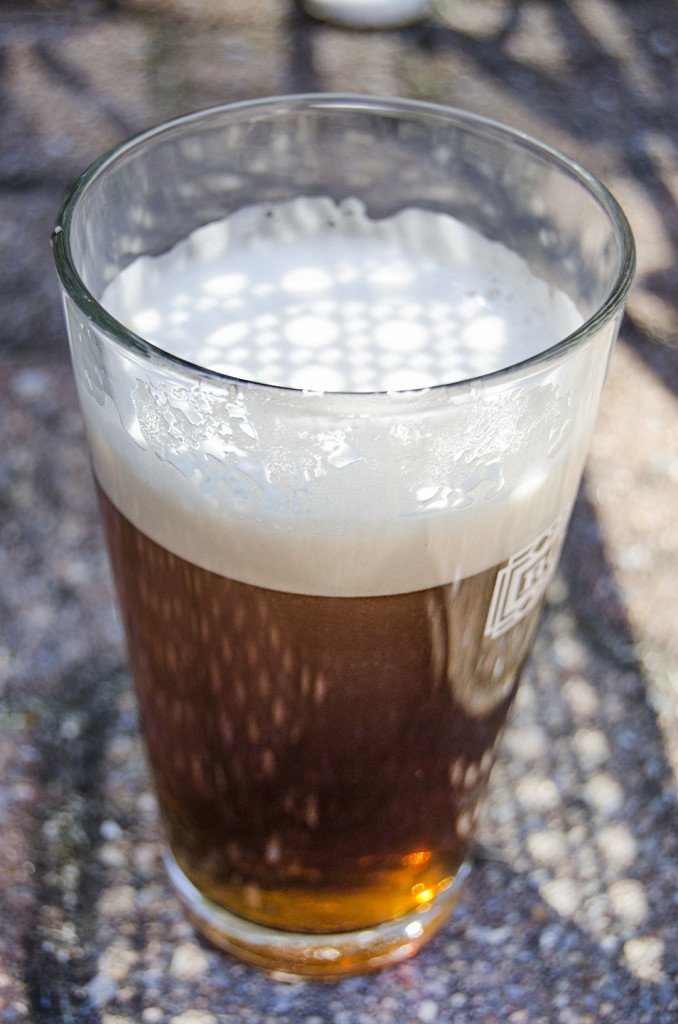The Nitro Beer Craze is Upon Us
We’re all familiar with the pleasant bubbles of a carbonated drink, but there’s a new gaseous trend hitting the beverage world: nitrogenation. If you’ve ever had a pint of Guinness, you’ve had a nitro beer. The trend has extended to coffee as well, but the effect is the same: nitrogen produces a smooth, creamy mouth-feel in whatever beverage it’s infused into. Why? It’s all about the science…
Let’s Talk Gas
Carbon Dioxide is a natural byproduct created when fermenting beer (alcohol is the other byproduct – woo!). Additional carbon dioxide is added prior to kegging, bottling, or canning to give your beer that extra fizz and foam that make it so refreshing. But what happens when you add nitrogen?
Bubbles
Bubbles happen. Nitrogen is largely insoluble in liquid meaning that when the nitrogen is forcefully infused through tiny holes, those bubbles hang around, making the beer feel thicker and creamier. Typical nitro beers contain 70-75% nitrogen and 25-30% carbon dioxide, meaning the majority of the gaseous bubbles are the tiny nitrogen bubbles. Don’t expect the typical beer fizz; these beers just feel flatter. That being said, however, nitrogen foams have serious staying power. Since the atmosphere is also mostly nitrogen, there is little interaction between the two, making it very stable. Carbonated beverages react with the atmosphere differently, causing their bubbles to pop faster – that is why the head on a nitro lasts much longer than that of a carbonated beer but is also why you won’t experience as much aroma from a nitro.
The chemical reactions that occur with carbon dioxide differ from those with nitrogen, meaning the blend of bubbles also affects the flavor as well as the feel. When carbon dioxide interacts with water, a reaction occurs that produces what is called carbonic acid (H2CO3), which later breaks into bicarbonate with an extra hydrogen ion. If you’re not a chemistry person and I’ve totally lost you, I’ll take you back to high school chem: this lone hydrogen molecule lowers the pH of the beverage, meaning it becomes more acidic. This reaction does not occur with nitrogen meaning that even beers that are made to be hoppy, bitter, or acidic, cannot achieve the same sharp flavor as they could when carbonated. For that reason nitrogenation tends to favor grain-heavy as opposed to hops-heavy brews.
It’s All About Preference
Sam Adams has come out with what they call their “Nitro Project” which has attempted to can a nitro stout, an IPA, and a white. I am a big pale ale fan, so naturally when I saw the nitro IPA I grabbed it, expecting a magical mix of sharp and smooth (as the box promised). Without knowing the aforementioned chemistry yet, my hopes were high. I was naïve and I was disappointed. This beer did not meet my hopspectations. My partner in crime, however, is a fan of white beers so we grabbed a pack of those too for comparison and these proved to be smooth and creamy and pleasant.
We also picked up a pack of Guinness’ Nitro IPA but found it to have the same lack of bite, simply due to the chemistry. For people who don’t love super strong IPAs, the Guiness IPA is probably a good middle-of-the-road not-too-bitter-not-too-smooth one. I personally like my IPAs to punch me in the face, but like we’ve said, it’s all about preference.
It’s Also About Procedure
The way you serve a beer really influences its nuances. Most beers on tap are served at 36-38 degrees Fahrenheit and the kegs and taps are crafted specifically to preserve carbonation and freshness. Bartenders are even trained how to pour the beer to create an ideal balance of foam. But when you put beer into a can or bottle, you sacrifice control over certain variables like timeliness and temperature of serving. We will warn you, a warm nitro is truly an alarming sensation. It feels like drinking melted beer-flavored ice cream (which might not sound that bad but think: wouldn’t it be better cold?).
One thing you will notice about canned nitros is a small thingamajig in the can. That thingamajig is a “nitrogen-filled widget” which releases the nitrogen into the beer when you pop the top and change the can’s pressure. This widget allows the consumer to drink the beer at their leisure (although like most beers, don’t leave ‘em laying around for too long, it’s not a fine wine that gets better with time). Nitros in a bottle, like those produced by Left Hand Brewing, do not have such a widget but do come with instructions for pouring (they recommend a hard 180° angle pour) to “activate” the bubbles.
Red Hatchet Says…
First, consider the fact that when these nitros are canned or bottled, it becomes your responsibility to chill, pour, and serve as intended to get the beer’s true experience. That being said, if you like beers with strong acidic, sharp, or hoppy flavors, forgo finding it in a nitro version. The crisp fizz of carbonation complements and delivers those flavors much better than a nitro. Crisp is not a word I would use to describe any nitro whether served correctly or not. Something more rounded like a wheat or a stout works with nitro because the mouth-feel amplifies those flavors. Nitro enhances certain beers but certainly not all beers.









No Comments